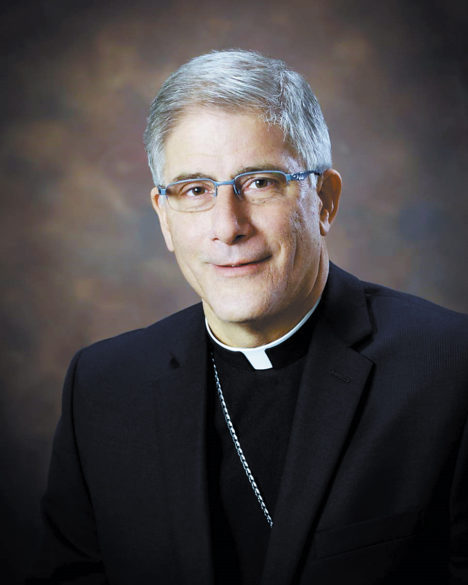Thomas More, saint and martyr, and Sister Thea Bowman, Servant of God and prophet for our time, both had a deep love for learning. Both placed their scholarship in service to their brothers and sisters while witnessing to the eternal love of the Lord Jesus.
By Bishop Joseph R. Kopacz, D.D.
During the time that the Diocese of Jackson was preparing to introduce Sister Thea Bowman’s Cause for Canonization in 2018 I discovered that she had done her doctoral dissertation at Catholic University, Washington, D.C. on St. Thomas More’s final masterpiece while imprisoned in the Tower of London for 15 months prior to his execution.
There are more than a few blessings in this discovery, and one in particular is to celebrate the universality of the Catholic Church. A preeminent Englishman of the 16th century, who had reached the heights of the legal and political professions of his time before becoming a saint and martyr, captured the imagination of a 20th century Servant of God, Sister Thea Bowman.
In the previous edition of Mississippi Catholic we featured Sister Thea’s Cause through the lens of the documentary film that is in the making with a Fall, 2022 release. In this column I present the lens of her doctoral dissertation to feature her scholarship that permeated her charismatic and prophetic voice.
What is the bond that linked these two disciples of the Lord Jesus from over a span of 400-500 years? The English barrister died in 1535 and the Religious Sister was born in 1937. Some historical background is needed to set the stage.
Thomas More was a confidant and favored companion of Henry VIII until he refused to take the Oath of Allegiance to the King who was declaring himself as the head of the Catholic Church in England. His refusal earned him lodging in the Tower of London for 15 months, but his imprisonment was not time wasted.
In the Spring and Summer of 1534 while he waited in the Tower for formal trial and sentencing More began the writing of A Dialogue of Comfort Against Tribulation. He wrote A Dialogue to stir and prepare the minds of Englishmen to withstand courageously and not to shrink at the imminent and open persecution which he foresaw and immediately followed, against the unity of the church and the Catholic faith.

When Thomas More was in the Tower of London monasteries were still intact, Catholic Churchman were still held in honor, and wholesale persecution had not yet begun. More however knew Henry VIII better than most men did. He also knew the political world with its grappling for power and wealth, and he foresaw what was to come. His formal trial, condemnation and sentencing on July 1, 1535, provided the public forum to state that the issue that concerned him was the king’s undermining of papal authority. On July 5 he wrote his last letter to his daughter, Margaret. On July 6 he was beheaded, not because he was being forced to give up his faith in Jesus Christ, but because this faith was inextricably implanted in the Catholic Church.
More died in physical poverty and worldly disgrace. In A Dialogue of Comfort Against Tribulation he left his last testament and the final legacy of his wisdom. Following the example of Jesus at the Last Supper when he consoled his apostles in anticipation of the tribulation to follow with his crucifixion, this intrepid martyr understood the power of words as a lasting legacy when coupled with witness.
Sister Thea removed from the shelves of academia A Dialogue of Comfort Against Tribulation in order to breathe new life into a masterpiece, whose pages still reach out to us, urging enduring solutions to perennially recurring human problems, she stated at the conclusion of her thesis in 1972.
She entitled her scholarly work, “The Relationship of Pathos and Style in A Dialogue of Comfort Against Tribulation: A Rhetorical Study.” This became her successful doctoral project to elevate pathos into the realms of logos and ethos.
She contended: “More’s attempt to reach the needs of his audience, to reach their hearts as well as their minds, to fire their imaginations with images of Christ’s suffering, yelping devils, damned souls, or the protective care of God, and to delight them so as to make them more receptive of his message, is conscious and deliberate. Pathos, the endeavor to stir the emotions of his hearers, in large measure determines the distinctive character of A Dialogue.”
She further elaborated: “He graphically juxtaposes good and evil, pleasure and pain, life and death. He compares temporal joys and sorrows with those that are eternal. He dwells on the cruelty of the monarch, the folly of worldly vanity, the shame of disloyalty, the fear of hell, the hope of salvation, and above all the love of a suffering Christ, and a provident God. He offers a choice between fidelity to God and the loss of temporal goods, and submission to the king at the risk of eternal salvation.”
Thomas More, saint and martyr, and Sister Thea Bowman, Servant of God and prophet for our time, both had a deep love for learning. Both placed their scholarship in service to their brothers and sisters while witnessing to the eternal love of the Lord Jesus. Both offered comfort and encouragement to overcome tribulation, and in their brightest and darkest hours they did not falter. Both lived until they died, and then went home like a shooting star. They are part of that Cloud of Witnesses who teach and inspire in every generation within the Catholic Church, and far beyond its visible structures.
